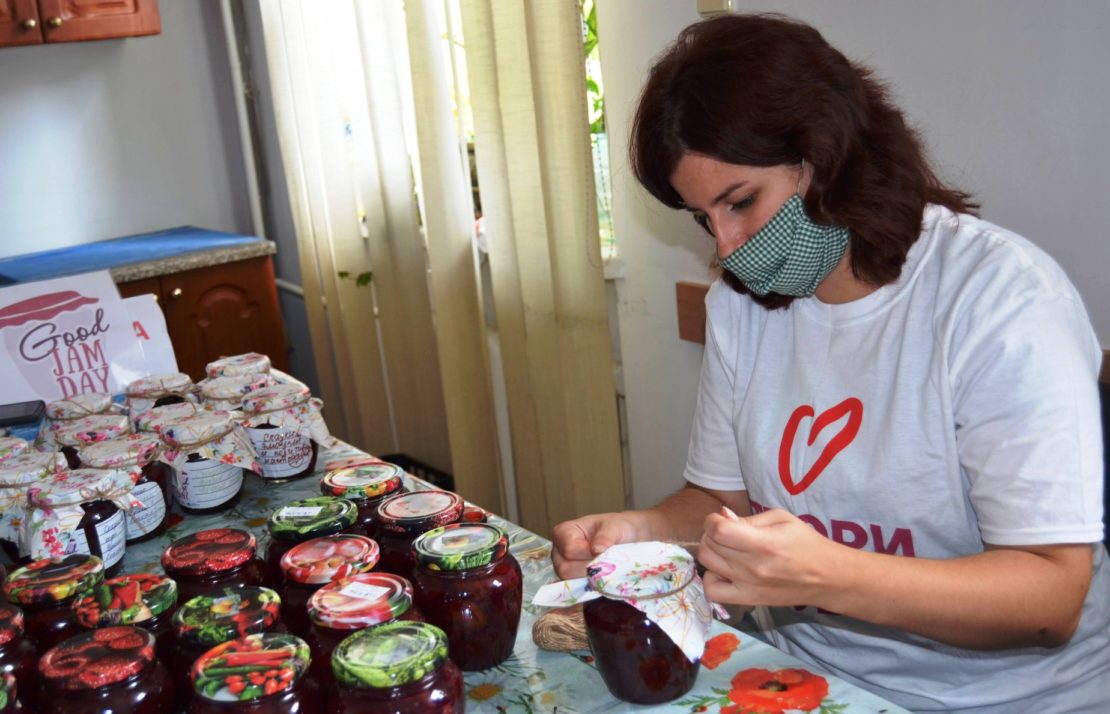Life as we know it has abruptly changed in the wake of COVID-19. Many of us are self-quarantined at home, perhaps watching the news with dismay and wondering how we can help be a part of the solution. Although we can’t support each other in-person right now, we can support each other virtually.
As a virtual volunteer, you can make a meaningful contribution to nonprofits, social enterprises, and impact initiatives around the world that need your skills — without ever leaving home. Learn how to find and plan a successful virtual volunteering engagement below.
Virtual Volunteering Best Practices
To see the list of places to find virtual volunteering opportunities, keep scrolling down. But before you do, it’s worth taking a moment to learn how to be an effective online volunteer. Just because you are volunteering, doesn’t mean you’ll make things better — done wrong, even well-intentioned volunteers can end up creating more harm than good. To ensure that your efforts have the intended impact, here are a few guidelines to keep in mind:
- Focus on a real, solvable problem. Start by understanding what the particular organization and/or stakeholder group needs support with, rather than pushing your ideas or projects. As Ernesto Sirolli suggests, if you want to help someone, shut up and listen. The easiest way to do this is to find someone within an existing organization who is trying to accomplish a specific goal but is facing barriers related to a lack of time, money, or skills. Then, use your time and skills to help them overcome those barriers to achieve their goal.
- Follow a human-centered approach to proposing solutions. This starts with understanding the stakeholders you are trying to serve, building empathy with them, focusing on a very specific problem, ideating ways to solve the problem, prototyping a solution, and then testing it to make sure it will work.
- Define success and sustainability before you start. Is the goal to finish a project and say you finished something, or is there a goal to create a meaningful outcome for a specific stakeholder? If you are not able to finish it yourself, is it possible for the existing team and/or another volunteer to pick up where you leave off? If you need some inspiration, watch this talk about how to measure what matters.
- Stick with it! It’s easy for virtual projects to fall by the wayside. However, starting and stopping projects when a volunteer falls through is costly for social impact organizations. If there is a risk that you won’t be able to keep a commitment, start by committing to less and then revisiting and expanding your commitment as time goes on.
- Have a conversation about communication, and develop a plan to get better at it. Know who your point of contact is, and what communication channels to use throughout the project. It’s important to have a dedicated point-person managing the project who you can check in with, ask questions, or get feedback from. Because virtual communication can happen through a variety of channels (phone call, video call, text message, email, social media message, WhatsApp) it’s also important to align up-front on how you’ll communicate so that boundaries are maintained. Here’s a good guide to running effective virtual meetings to help you make the most of your time.
- Set the stage for effective collaboration by agreeing to collaboration tools. When working virtually, the right collaboration tool can make you more effective! Take advantage of (free) online collaboration tools like Google Docs and Office365, which allow multiple people to share, edit, and brainstorm in the same document. Many of these technologies, like Mural, are even free for nonprofits during times of crisis.
- Agree to schedules and availability. Even just a short conversation upfront about what technology to use, how you’ll use it, and what the preferences are for each stakeholder can save a lot of time and headaches down the road. Share calendars and be responsive. Make it easy to set up a time with each other, even for just a quick check-in call, by using scheduling tools like Calendly. By addressing ideal times and methods to communicate, you’ll make it easy to empower and support each other.
- Be safe, and enforce safety. You might feel the need to just have one quick in-person meeting or to do one site visit. But these are unprecedented times, and the spread of COVID-19 is very dangerous. Prioritize your health, and remind others to take care of their health, too. Keep checking your local and national government’s guidance for the best way to stay safe and protect others.
- Focus on transferring know-how and skills to the organization and/or people you are working with. Your work will get busy again. Eventually, you will get pulled in different directions. By transferring know-how, you make yourself purposefully dispensable so that the team can build on your impact long after your project finishes. And remember, volunteering is an opportunity to develop your skills, as well as those of the people you are serving. Here some tips on how to keep the learning going while you volunteer.
- Be creative! The world has never encountered anything like this before. Use this as a time to experiment, innovate, and create. Try a new work style, challenge yourself and your team to learn new skills, and embrace new technology – by being creative and fostering creativity, you will grow as a person and help instill more resiliency in your team and project.
For even more best practices, read our guide to skills-based volunteering published in partnership with Stanford’s Social Innovation Review and our guide to volunteering abroad.
Where to Find Virtual Volunteering Projects During COVID (and beyond)
To help you find the right opportunity to make an impact from home, here is a list of 37 places to find virtual volunteering projects:
- AllforGood: AllforGood is Points of Light’s database with thousands of volunteer opportunities, including a list of virtual projects that can be completed remotely.
- American Red Cross: The Red Cross Digital Advocates program helps spread awareness about the campaigns of the Red Cross, and its platform includes a wide variety of virtual projects that can be completed remotely.
- Be My Eyes: A free app that connects blind and low-vision people with sighted volunteers and company representatives for visual assistance through a live video call.
- Business Council for Peace: A platform with a limited supply of business-related virtual volunteering projects to support businesses that promote peace.
- Career Village: A global platform where students can ask questions and professionals can answer them.
- Catchafire: Catchafire connects professionals with social enterprises to volunteer, and has a list of projects that you can complete virtually while social distancing.
- Cherie Blair Foundation for Women: It’s Mentoring Women in Business Programme combines mentorship with technology to pioneer a new way of supporting women entrepreneurs, with a focus on the UK.
- Create the Good: An initiative run by AARP to help its members connect with nonprofits to share their skills and life experience. However, the platform is open to non-AARP members as well.
- Crisis Text Line: A volunteer-run crisis counseling service operating exclusively through SMS message.
- CrisisCamp: A platform that brings together developers, programmers, and other IT experts to use open technologies to help people and places impacted by crises. You can submit this form to express interest in volunteering and join their email group for updates.
- DoSomething: DoSomething mobilizes young people to contribute their talents for good, and has used the internet to successfully urge Apple to diversify their emojis, change the dictionary definition of “Black/black”, and create the largest crowdsourced anti-bullying guide.
- Do-It: A database with thousands of volunteer opportunities, which you can filter for remote opportunities by selecting “do it from home” in the search criteria.
- Grow Movement: A platform for volunteers to transfer business skills to African entrepreneurs through mentorship via Skype, phone, and email.
- Help With COVID: A group of tech volunteers has created a tech-specific virtual volunteer opportunities
- Idealist: Includes a job board and database of volunteer opportunities that advance social good, as well as a dedicated list of opportunities and communities you can join from home while social distancing.
- IMAlive: IMAlive is an online crisis center that is part of the Hopeline Network, and offers training for volunteers to provide online crisis support to individuals.
- MicroMentor: A platform operated by Mercy Corps that connects volunteers with entrepreneurs to solve business challenges.
- Micro-volunteering platforms like CauseCorps, PostPals, CollaVol, vInspired, Crowd4U, and HelpfromHome, which feature short-term projects and tasks that can take anywhere from a few minutes to a few hours.
- MissingMaps: An open, collaborative project in which you can help to map areas where humanitarian organizations are trying to meet the needs of vulnerable people.
- MovingWorlds: MovingWorlds helps build the leaders behind world-changing ideas by connecting skilled professionals with verified social enterprise projects around the world to build human capacity. Click “filter by location and more” to filter by virtual projects only.
- Open source engineering and software projects like OpenMRS or the Open Source Initiative, which rely on volunteers to contribute their skills to the success of open source. You can find a list of other opportunities to support open-source here.
- Project Gutenberg: Project Gutenberg is working to create the world’s largest free digital library with the support of volunteers who help transcribe eligible books, proofread, or make copies for those without internet access.
- Smithsonian Digital Volunteers: A community of volunteers making historical documents and biodiversity data more accessible through transcription.
- Taproot+: A platform from the Taproot Foundation connecting nonprofits with skilled volunteers for pro-bono consulting projects.
- TED Translators: An online community of volunteers who subtitle TED Talks, and enable the inspiring ideas in them to crisscross languages and borders.
- The Trevor Project: TrevorChat/TrevorText volunteers are trained to answer chat messages or texts online from young people who are struggling with issues such as coming out, LGBTQ identity, depression, and suicide.
- Translators without Borders: A nonprofit leveraging volunteers to offer language and translation support for humanitarian and development agencies on a global scale.
- United Nations: The United Nations Online volunteering platform allows organizations and volunteers to team up to address sustainable development challenges – anywhere in the world, from any device.
- VolunteerConnector: A Canada-based database of digital volunteer opportunities that can be done from home.
- VolunteerMatch: VolunteerMatch is one of the largest sources for volunteer opportunities with nonprofits working on a variety of causes, and includes a database of virtual volunteering projects that can be completed remotely.
- Zooniverse: The world’s largest platform for people-powered research, enabling volunteers to take part in real cutting edge research in fields across the sciences, humanities, and more.
- Your city, county, or other municipality: Do a Google search for “virtual volunteer opportunities (city)” to find local organizations to connect with. Your city likely also has a database dedicated to local volunteer projects.
- Your company: Oftentimes, your company’s human resources, social responsibility, social impact, corporate citizenship, and/or PR teams will have opportunities for you to get involved as an employee. Many companies launch new programs in response to crises, like these examples from COVID.
- Your industry association group: Many industry association groups offer opportunities to volunteer, either internally (serving on a governance committee) and external volunteer opportunities, like serving on a governing committee or micro-volunteering with a nonprofit.
- Your local animal shelter: Many animal shelters are in desperate need of foster families to temporarily house the influx of animals in need. Reach out to shelters and rescue groups in your area for more information about fostering a pet to shelter.
- Local food or clothing banks: These kinds of organizations always need a combination of support, particularly in times of crisis. In the USA, networks like Feeding America can help you find validated banks and volunteering needs.
- Your friends: Talk to your friends and a larger professional network to find potential opportunities for collaboration and mutual support.
Written by: Alexandra Nemeth, Program Manager at MovingWorlds.org



